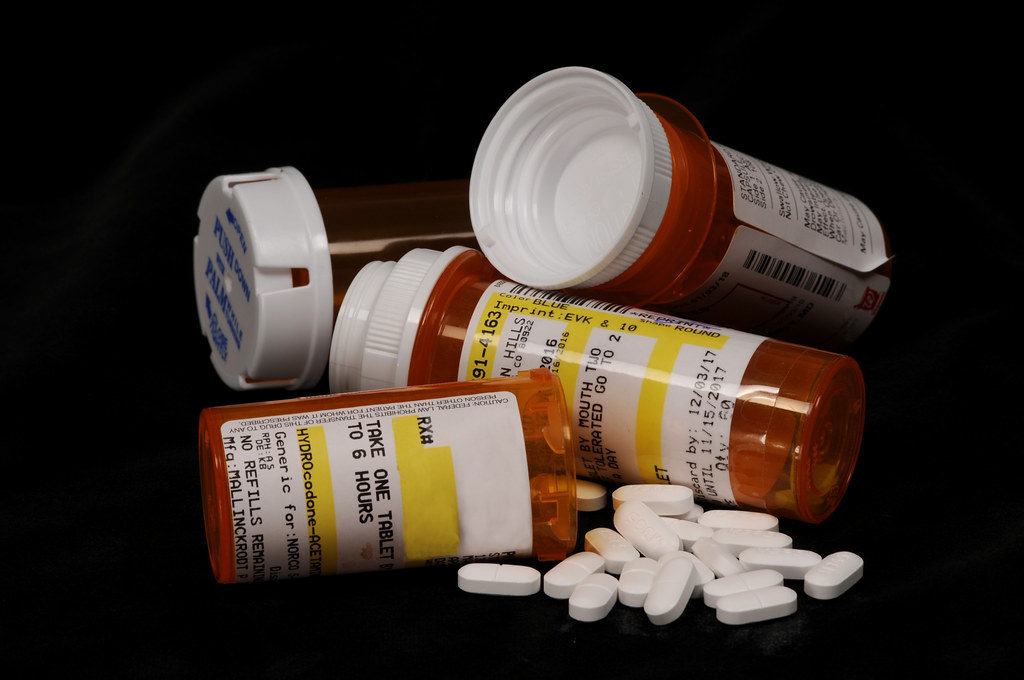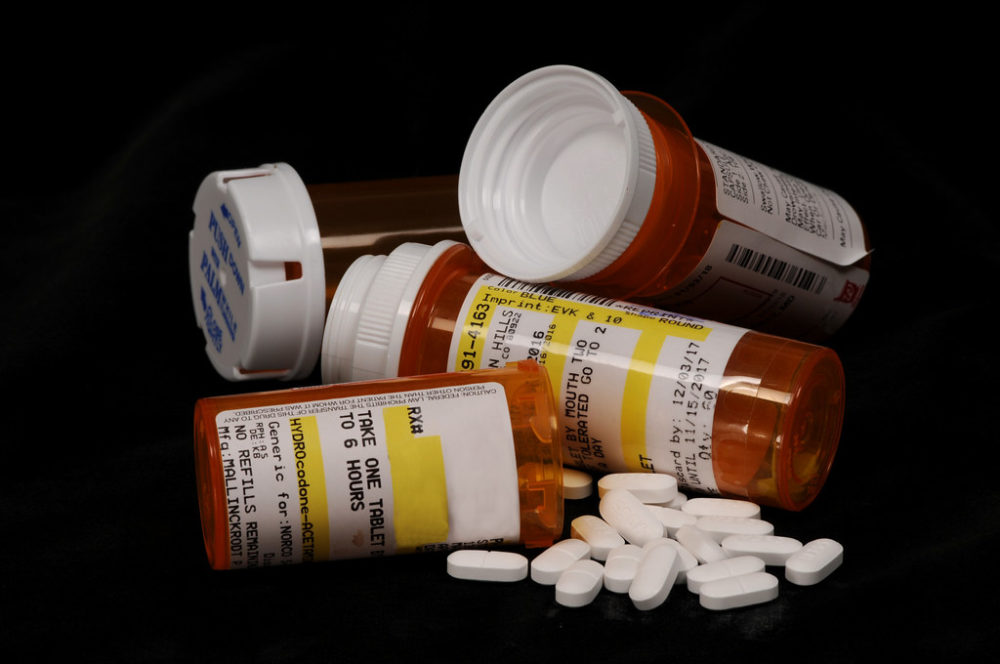
Some of the most popular opioids in the United States are legal
An NDSU developed program has goals of preventing opioid addiction before the prescription is filled
One hundred thirty — that is the number of people who die of an opioid overdose every day in the United States, according to drugabuse.gov. In the Midwest, opioid overdoses increased by 70 percent from July 2016 – September 2017.
This rise in overdoses is also true in North Dakota. In 2010, North Dakota’s rate of opioid overdoses was 3.4, but in 2016 that escalated to 10.6, according to cdc.gov.
Some of the most popular opioids in the United States are legal. Popular opioids include fentanyl, oxycodone, hydrocodone, codeine, morphine and heroin. Heroin is the only illegal substance on the list.
The legal opioids in America are all Schedule II drugs. According to the Drug Enforcement Administration, the definition of a Schedule II drug is “drugs with a high potential for abuse, with use potentially leading to severe psychological or physical dependence. These drugs are also considered dangerous.”
The North Dakota State University policy on alcohol and illegal drugs states, “The University prohibits the unlawful or unauthorized use, possession, storage, manufacture, distribution, or sale of alcoholic beverages and products (hereafter referred to as “alcohol”), as well as any illicit drugs or drug paraphernalia in University buildings, any public campus area, in University housing units, in University vehicles, or at any University-affiliated events held on or off-campus, which are sponsored by students, employees and their respective campus organizations (including all fraternities and sororities).”
NDSU has had no reports of an opioid overdose on campus or any campus-affiliated buildings.
“You lose interest in relationships, exercising, watching things you enjoy and hobbies because they are like nothing in comparison.”
Professor of Pharmacy Practice and NDSU Public Health member, Mark Strand
According to the Center for Disease Control, the rise in opioid overdoses occurred in three waves. The first wave was the increased number of opioids that were being prescribed in the 1990s. Since 1999, opioid overdose caused by prescription has been increasing.
The second wave was the rise in heroin use beginning in 2010. The final wave was the increase in synthetic opioids being added to other illicit drugs like heroin, counterfeit pills and cocaine. The most popular synthetic opioid used is fentanyl.
When someone uses drugs, the pleasure center of the brain is activated and releases dopamine. Dopamine is the “feel good” chemical in the brain. Dopamine is also released during pleasurable events like socializing, working out and laughing.
In these situations, natural production dopamine is slower and eventually plateaus. However, when using opioids dopamine isn’t regulated and an individual can take as much as they want and feel the effects almost immediately.
This type of release of dopamine is what causes people to keep using drugs. Over time, with continued use, the brain will make adjustments, so it is not as affected by the drug. This leads to the user taking more of the drug to feel that same rush. This process is called tolerance. This is what causes further addiction.
Professor of Pharmacy Practice and NDSU Public Health member, Mark Strand, has expertise in the area of prevention of opioid use disorders. Stand’s background is in epidemiology, the evaluation of health burdens in large numbers of people.
“All of a sudden nothing can compete with [opioids],” Strand said. “Your synaptic processes get hard-wired to prefer that to that. You lose interest in relationships, exercising, watching things you enjoy and hobbies because they are like nothing in comparison.”
To help battle the opioid crisis the Food and Drug Administration has developed the FDA’s 2018 Strategic Policy Roadmap. In this policy, the FDA has four priority areas for 2018, which are the following.
- Reduce the burden of addiction crises that are threatening American families
- Leverage innovation and competition to improve healthcare, broaden access, and advance public health goals
- Empower consumers to make better and more informed decisions about their diets and health, and expand the opportunities to use nutrition to reduce morbidity and mortality from the disease
- Strengthen FDA’s scientific workforce and its tools for efficient risk management
According to the FDA, “[Opioid addiction] represents one of the most pressing public health emergencies facing the FDA.” Also, according to the FDA “The number of prescription opioids sold to pharmacies, hospitals, and doctors’ offices nearly quadrupled from 1999 to 2010. At the same time, deaths from immediate-release opioid drugs have more than quadrupled since 1999.”
“Individuals struggling with use disorders, those who overdosed or even died from an overdose, people in society easily stigmatized them,” Strand said. “As opposed to a more evidence-based understanding of how someone who has never taken the drug becomes addicted. I see them as victims of flooding our society with a volume of opioid prescriptions beyond what the evidence called for.”
To combat this epidemic, the two main focus areas of many organizations are prevention and treatment with prevention being the main goal. This is because opioid addiction has a high chance of relapse or using the drug again. When someone becomes addicted to opioids changes are made in the brain, which causes the brain to seek that drug.
On Oct. 1, 2018, Strand helped to launch ONE Rx. The ONE Rx project was founded to educate patients prescribed opioids about the potential risks of the medication.
Pharmacists screen patients to identify potential risks of misuse or addiction. Pharmacists use the Opioid Risk Tool or ORT to screen patients.
The ORT has five categories to score potential risk factors. The categories are a family history of substance abuse, a personal history of substance abuse, ages between 16-45 years old, history of preadolescent abuse and psychological disease. Patients with scores of eight or higher are deemed to have a high risk of opioid abuse.
“We’re providing an evidence-based training for pharmacists to ensure the interaction with the patients will be truly in the patient’s best short-term and long-term interests,” Strand said
ONE Rx has a 97 percent accuracy rate and has screened more than 4,000 patients in North Dakota.
“It allows us to focus our time and energy on those who need it,” Strand said. “It’s very individual and patient-based.”
The ONE Rx project provided training to all the pharmacists in North Dakota. Pharmacies are able to then enroll to be ONE Rx pharmacies. Currently, 67 pharmacies in the state have been enrolled in the program with under half adopting the standards. ONE Rx is currently only in North Dakota but has the potential to expand.
“We are in conversation now about expanding this across the country,” Strand said. “It’s the only of its kind in the country. We’ve presented around the country and have had good attention from individual states that want to implement something like this.”
Other steps health professionals are taking to reduce opioid abuse and overdose include limiting the number of prescriptions for opioids and conducting studies on pain and pain management. Current studies are working to predict the amount of pain associated with a procedure to prescribe an amount suitable for that pain.
“We have a tendency to blame people for behavioral health issues or addictive issues as opposed to recognizing some people have higher risk factors and society puts individuals in positions,” Strand said.
“It’s not like anyone set out to be addicted to opioids and certainly no one set out to say, ‘You know it would be fun to overdose or die.’ That’s not how people think. People want a happy life. Individuals who are misusing opioids shouldn’t be stigmatized and labeled. We should draw them in and help them to reclaim their life.”
Strand would like to remind students to be attentive to lock, store and look after prescription medications responsibly to protect themselves and others.
